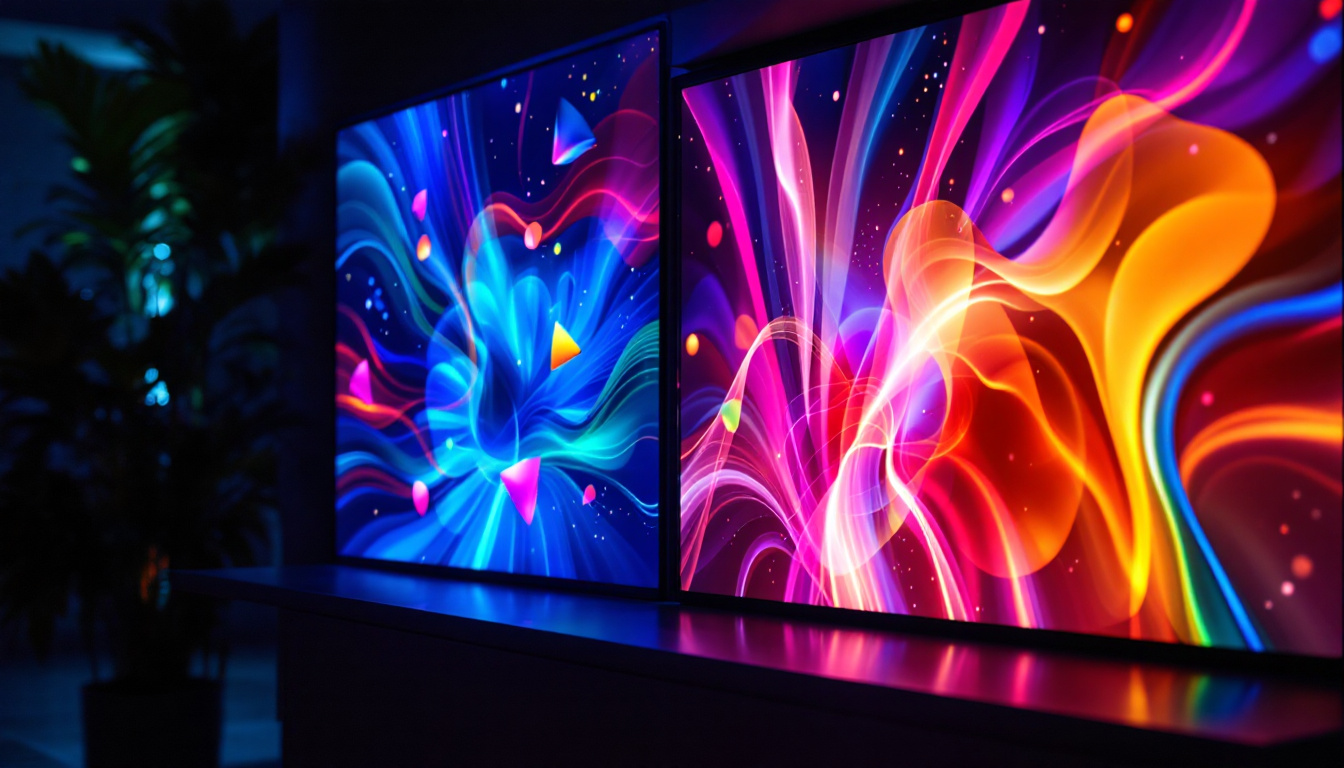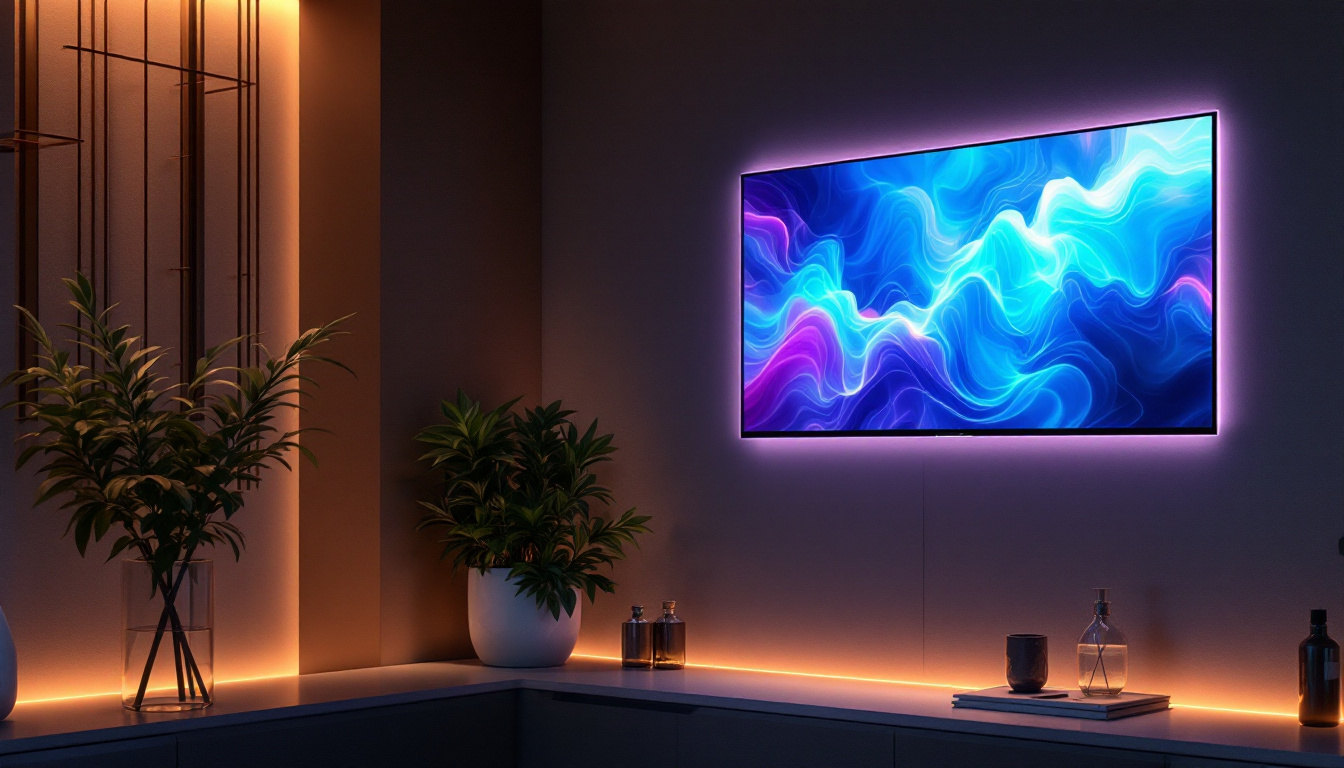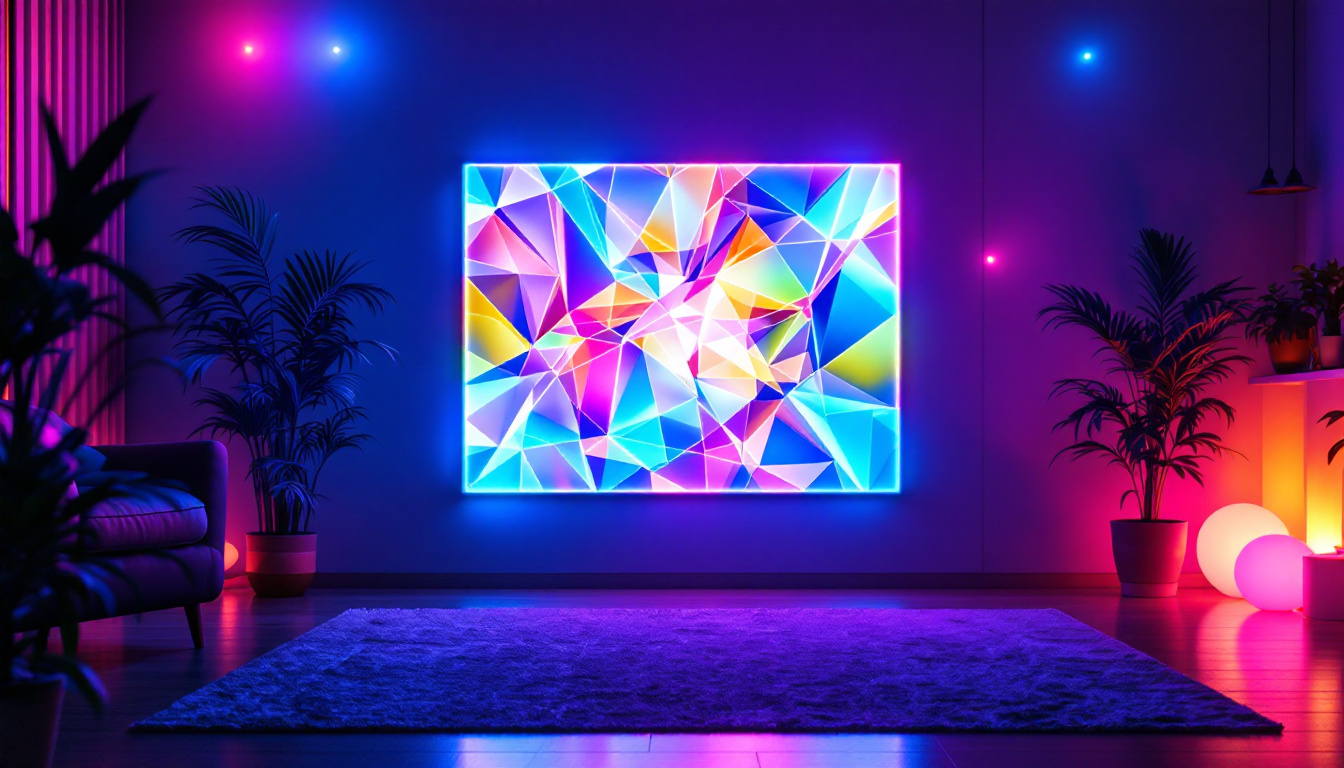In the realm of modern technology, the terms LCD and LED are frequently encountered, often leading to confusion among consumers. While both technologies are pivotal in the display industry, they serve different purposes and operate on distinct principles. This article aims to demystify these terms, providing clarity on what LCD and LED displays are, how they function, and their respective advantages and disadvantages.
Understanding LCD Technology
LCD, or Liquid Crystal Display, is a technology that utilizes liquid crystals to create images. These displays are commonly used in televisions, computer monitors, and mobile devices due to their ability to produce sharp images and consume less power compared to older technologies like CRT (Cathode Ray Tube).
How LCD Works
The core of an LCD consists of liquid crystals sandwiched between two layers of glass or plastic. When an electric current passes through these liquid crystals, they align in a way that either allows light to pass through or blocks it. This manipulation of light creates the images seen on the screen.
Typically, an LCD does not emit light on its own. Instead, it relies on a backlight, usually made up of fluorescent tubes or LEDs, to illuminate the display. The combination of the liquid crystals and the backlight enables the screen to produce vibrant colors and sharp contrasts. The backlight technology has evolved significantly, with LED backlighting now providing better brightness control and color accuracy, further enhancing the viewing experience.
Advantages of LCD Displays
LCD displays offer several advantages that have contributed to their widespread adoption. Firstly, they are generally thinner and lighter than CRT monitors, making them more suitable for portable devices. Secondly, they consume less power, which is an essential factor in energy efficiency and cost-effectiveness.
Moreover, LCDs provide excellent image quality, with high resolution and clarity, making them ideal for various applications, from gaming to professional graphic design. They also have a longer lifespan compared to older display technologies, which adds to their appeal. The versatility of LCD technology allows it to be used in a wide range of devices, from large-screen televisions that enhance home entertainment to compact screens in smartphones that provide on-the-go access to information and media.
Limitations of LCD Displays
Despite their many benefits, LCD displays are not without their drawbacks. One significant limitation is their viewing angles. Colors and contrast can diminish when viewed from the side, which can be problematic in larger settings where multiple viewers are present.
Additionally, LCDs may struggle with fast-moving images, leading to motion blur in certain scenarios, such as gaming or watching action films. This limitation has led to the development of newer technologies to address these concerns. Innovations like high refresh rates and improved response times are being integrated into modern LCDs, aiming to provide smoother visuals and enhance the overall user experience. Furthermore, advancements in technologies such as IPS (In-Plane Switching) panels have improved color reproduction and viewing angles, making LCDs more competitive against newer display technologies like OLED (Organic Light Emitting Diode).
Exploring LED Technology
LED, or Light Emitting Diode, is a technology that has revolutionized the display industry. While LED displays are often associated with LCDs, they represent a different approach to creating images. In essence, LED refers to the type of backlighting used in LCD displays, but it can also refer to displays that use LEDs as the primary light source. This versatility has allowed LED technology to permeate various sectors, from televisions and computer monitors to smartphones and outdoor advertising displays, making it a ubiquitous part of modern life.
How LED Works
LED displays utilize an array of tiny light-emitting diodes to produce images. These diodes can emit various colors, allowing for a broad spectrum of hues. In the context of LCDs, LEDs serve as the backlight, enhancing the brightness and color accuracy of the display. The innovation behind LED technology lies in its ability to manipulate light at a granular level, which not only improves image quality but also opens up new possibilities for design and functionality in electronic devices.
There are two primary types of LED backlighting: edge-lit and full-array. Edge-lit LED displays have LEDs positioned along the edges of the screen, while full-array displays have a grid of LEDs behind the entire screen. Full-array technology often includes local dimming, which allows for better contrast and deeper blacks by turning off specific sections of the backlight. This capability is particularly beneficial for watching movies in dark environments, as it enhances the cinematic experience by providing a more immersive viewing atmosphere.
Advantages of LED Displays
One of the most significant advantages of LED displays is their superior brightness and contrast levels. The use of LEDs allows for deeper blacks and more vibrant colors, enhancing the overall viewing experience. This makes LED displays particularly appealing for high-definition content and gaming. Furthermore, the rapid response time of LEDs contributes to smoother motion handling, which is crucial for fast-paced gaming and action-packed films, reducing motion blur and ghosting effects that can detract from enjoyment.
Additionally, LED technology is more energy-efficient compared to traditional LCD backlighting methods. This efficiency translates to lower energy bills and a reduced environmental footprint. Furthermore, LED displays tend to have a longer lifespan, making them a cost-effective choice in the long run. Their durability and resistance to breakage also make them ideal for a variety of applications, including outdoor signage and commercial displays, where they are exposed to harsher conditions and require reliable performance.
Limitations of LED Displays
While LED displays have many strengths, they are not without their challenges. One notable issue is the potential for uneven brightness, particularly in edge-lit models. This can result in “light bleed,” where bright areas appear washed out or inconsistent across the screen. Such imperfections can be particularly noticeable in scenes with dark backgrounds or when displaying static images, which can detract from the overall visual experience.
Moreover, the cost of LED technology can be higher than traditional LCDs, especially for models featuring advanced features like local dimming. Consumers must weigh the benefits against the price to determine the best option for their needs. Additionally, as technology continues to evolve, newer alternatives such as OLED (Organic Light Emitting Diode) are emerging, offering their own set of advantages and challenges. This dynamic landscape means that consumers must stay informed about the latest developments to make the best purchasing decisions for their viewing preferences and budgets.
LCD vs. LED: Key Differences
Understanding the differences between LCD and LED technologies is crucial for consumers looking to make informed purchasing decisions. While they are often discussed together, they serve different functions and have unique characteristics.
Display Technology
The primary distinction lies in the display technology itself. LCDs rely on liquid crystals and a backlight to produce images, while LED displays use light-emitting diodes as their light source. This fundamental difference affects various aspects of performance, including brightness, contrast, and color accuracy.
Image Quality
When it comes to image quality, LED displays generally outperform traditional LCDs. The enhanced brightness and contrast levels of LED technology lead to more vivid colors and deeper blacks. This makes LED displays particularly suitable for environments with high ambient light or for viewing high-definition content.
Energy Efficiency
Both LCD and LED technologies are more energy-efficient than older display technologies, but LED displays take the lead in this category. The use of LEDs allows for lower energy consumption, which is an essential consideration for environmentally conscious consumers.
Applications of LCD and LED Displays
Both LCD and LED displays have found their place in various applications, from consumer electronics to professional settings. Understanding where each technology excels can guide consumers in making the right choice for their needs.
Consumer Electronics
In the consumer electronics market, LCDs are prevalent in televisions, computer monitors, and smartphones. Their ability to produce sharp images at a lower cost makes them a popular choice for everyday use.
LED technology, on the other hand, is increasingly dominating the television market, with many manufacturers opting for LED backlighting in their LCD TVs. This combination allows for improved image quality and energy efficiency, appealing to consumers looking for the best viewing experience.
Professional Use
In professional environments, both technologies have their applications. LCDs are often used in graphic design and video editing due to their color accuracy and sharpness. Meanwhile, LED displays are favored in settings where high brightness and contrast are essential, such as in digital signage and large-scale presentations.
Gaming and Entertainment
For gaming enthusiasts, the choice between LCD and LED can significantly impact the experience. LED displays, particularly those with fast response times and high refresh rates, are often preferred for their ability to handle fast-moving images without motion blur. This makes them ideal for action-packed gaming and immersive entertainment experiences.
Future Trends in Display Technology
The display technology landscape is continuously evolving, with advancements aimed at enhancing performance, energy efficiency, and user experience. Emerging technologies are set to redefine the way consumers interact with screens.
OLED Technology
One of the most talked-about advancements is OLED (Organic Light Emitting Diode) technology. Unlike LCD and LED displays, OLED panels emit their light, allowing for even greater contrast ratios and more vibrant colors. This technology is gaining traction in high-end televisions and smartphones, offering consumers an alternative to traditional LCD and LED displays.
MicroLED Displays
MicroLED is another promising technology that combines the best aspects of LCD and LED. This technology utilizes tiny micro-sized LEDs to create images, offering superior brightness, color accuracy, and energy efficiency. As MicroLED technology matures, it has the potential to revolutionize the display industry, providing consumers with even more options.
Smart Displays
The rise of smart displays is also shaping the future of display technology. With integrated connectivity and advanced features, smart displays are becoming increasingly popular in homes and workplaces. These displays often combine LCD or LED technology with smart capabilities, allowing for seamless integration with other devices and applications.
Conclusion
In summary, understanding the distinctions between LCD and LED displays is essential for making informed decisions in today’s technology-driven world. While both technologies have their advantages and limitations, they cater to different needs and preferences.
As display technology continues to evolve, consumers can expect even more options that enhance their viewing experiences. Whether opting for an LCD or an LED display, being informed about the underlying technologies will ensure that users choose the best solution for their specific requirements.
Ultimately, the choice between LCD and LED should be guided by individual needs, preferences, and the intended application. With the right knowledge, consumers can navigate the complexities of display technology and make choices that enhance their digital experiences.
Discover Cutting-Edge LED Displays with LumenMatrix
Ready to elevate your visual experience with the latest in display technology? Look no further than LumenMatrix, a pioneer in LED innovation. Our extensive range of LED display solutions, from Indoor and Outdoor LED Walls to Custom and All-in-One LED Displays, is designed to captivate and engage your audience. Whether you’re looking to enhance brand visibility or create an unforgettable visual experience, LumenMatrix has the state-of-the-art technology to bring your vision to life. Check out LumenMatrix LED Display Solutions today and see how we can transform your visual communication.































